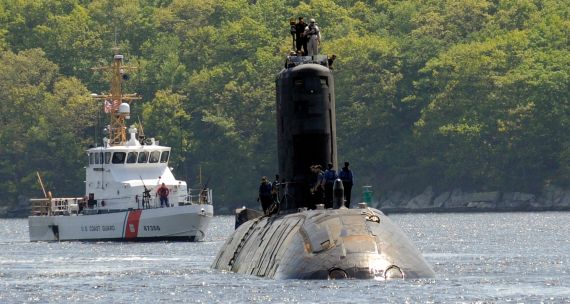Finland has a bold plan to short circuit the global network of maritime data cables that make up the circulatory system of the global economy. The idea is straightforward: build a cable north to the Arctic Ocean, then swing east along the Arctic coast of Russia and on to East Asia and Alaska. Once completed, this cable link could as much as double Internet connection speeds between Asia and Europe and – here’s the kicker – the thousands of kilometers of cable involved in this project could be laid as early as 2021.
I recently had a chance to meet up with Jukka-Pekka Joensuu, Executive Advisor to the Cinia Group – the Finnish Telecom Company leading the charge on this project. Joensuu explained that this cable has been the product of discussions dating back to 2013, and perhaps even further back to the abandoned Russian Optical Trans-Arctic Cable System (ROTACS) concept that would have linked London to Tokyo via the Arctic Ocean. But perhaps the most pivotal year was 2016, when former Finnish Prime Minister Paavo Lipponen breathed new life into the project when – at the request of the Finnish Government – he undertook a diplomatic tour to gauge the interest of countries along the probable route in participating in the Arctic cable link. Encouraged by his findings, the Finnish Transport Ministry instructed Cinia to begin developing plans for an Arctic data link. Meanwhile, China, Japan, Norway, Finland, Russia and others have already been holding regular dialogues in preparation for construction.
Making no effort to conceal my total ignorance of how telecom works, I asked Mr. Joensuu the question that had been bothering me from the outset: what is the value of cutting Internet lag-time in half? I don’t need a faster Internet connection to watch Netflix, so what’s the point of spending nearly a billion dollars to shave a few milliseconds off data transfers between Europe and Asia? It turns out Netflix is a good metaphor for understanding the value of this project.
Imagine Netflix wasn’t for streaming movies but was, instead, for streaming instructions to robots on factory floors around the world: that’s basically how this works. If Toyota, for example, wants its automated facilities abroad to be run by computers in its Tokyo headquarters, it needs an incredibly fast Internet connection to handle massive quantities of data involved in operating a factory. Imagining a similar system with an autonomous vehicle ‘streaming’ instructions from a central server, a fast connection is especially crucial to ensure that Internet-lag does not delay the car’s reaction to changes in its environment. Aside from these types of applications, the new cable connection also makes Finland an especially attractive destination for server farms. In short, this is a single project that could attract a raft of new industries to Finland as the de facto Eurasian data gateway.
Much like the projects we have discussed in previous posts in our China’s Polar Silk Road web series, this is a project that aims to create a more tightly integrated Eurasian continent, and does so by creating a path for data that mirrors the path for goods we have seen in our discussions of the Rovaniemi-Kirkenes railway and Arctic shipping. The rationale for the cable is also quite similar to the rationale for a new Arctic marine supply chain: a shorter route equates to faster and cheaper transportation, although here speed is measured in milliseconds, not days.
The connection to China may be less than apparent but, as one hub in this proposed new data network, Beijing is involved implicitly. There are, however, many other more concrete connections between the Finnish cable project and the Belt and Road Initiative (BRI). For starters, China has long been trumpeting a ‘Digital Silk Road’ as a companion piece to its more material and logistical ambitions for Eurasian connectivity. And in our discussion of project financing, Joensuu pointed to China’s Belt and Road Initiative – alongside European and Asian development banks – as a potential lever for construction funds for the Arctic data cable. Discussions with officials of the BRI – who Joensuu describes as “extremely interested” – are already underway.
As with the previous projects we have discussed in this web series, Finland appears to be capitalizing on the coincidence of its proximity to the Arctic, climate change, and China’s simultaneous desire for new paths to Europe to become the crucial gateway linking the two.
Click here to download our digital chapbook of the entire China's Polar Silk Road series, or read our blogs, below . . .
Scandinavia’s Unlikely Link in the Belt and Road Initiative
An Interview with the President of Finland's Sámi Parliament Tiina Sanila-Aikio
Angry Birds Creator Wants to Connect Finland to Belt and Road with World’s Longest Underwater Tunnel
Finland's Arctic Data Cable Set to Disrupt Global Connectivity




